Flame-resistant clothing refers to any garments that are specifically designed to protect the wearer from flames and thermal injury. FR clothing resists ignition and self-extinguishes once the source of the ignition is removed. This helps to prevent burns from both initial exposure to the flames and from residual heat transfer.
Flame Resistant Garments
here is a wide choice of FR garments on the market and obviously in our shop. But what exactly does FR (Flame Resistant) stand for?
When exposed to fire or an explosion, a lot of fabrics will ignite and continue to burn. Some will also melt onto the wearer’s body. This can cause significant injuries as textile fires often burn longer and result in more damage than the initial incident.
Flame-resistant clothing is specially designed so that it’s less likely to catch fire when exposed to combustion and high temperatures. In cases where the fabric does ignite, it won’t continue to burn once the heat source is removed. This gives the wearer valuable escape time and helps to minimize injuries. However, it’s important to remember that flame resistant doesn’t mean fireproof, and all flame-resistant clothing will burn if it’s heated for a long enough period of time.
Clothing that is flame resistant is generally also designed so that it doesn’t break open when heated. Open areas in the fabric would expose the skin to further hazard and potentially increase the severity of injuries. Specific apparel design considerations are extremely important for this purpose.
Primary Flame-Resistant Protection
Primary FR protection refers to flame-resistant coveralls or full body suits designed to be worn during activities in which the wearer is constantly exposed to hazards such as flames, radiant heat, arc flash or flash fire. Its purpose is to minimize burn harm by preventing or slowing the transmission of heat energy from the source to the wearer’s skin. Search the following labels on your garments indicating appropriate rating for protection.
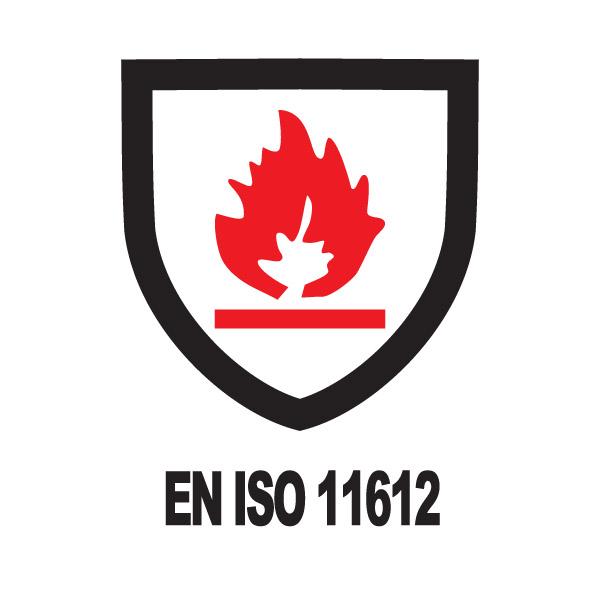
Clothing to protect against heat and flame
garments made from flexible materials, which are designed to protect the wearer's body, except the hands, from heat and/or flame
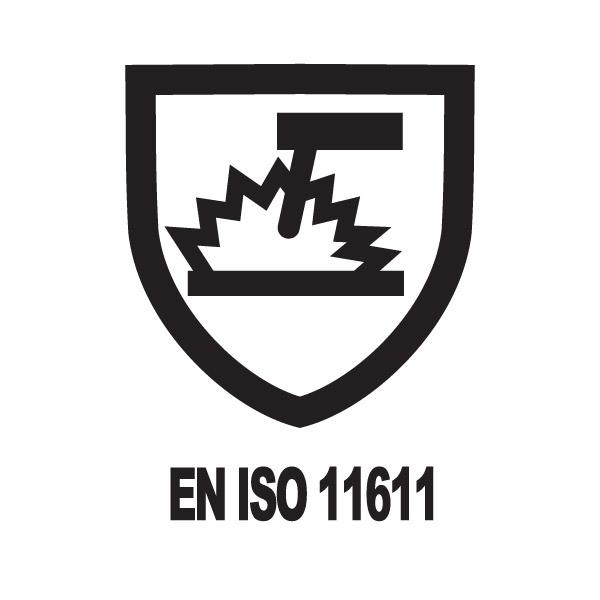
Protective clothing for use in welding and allied processes
minimum basic safety requirements and test methods for protective clothing designed to protect the wearer's body and that are to be worn during welding and allied processes with comparable risks
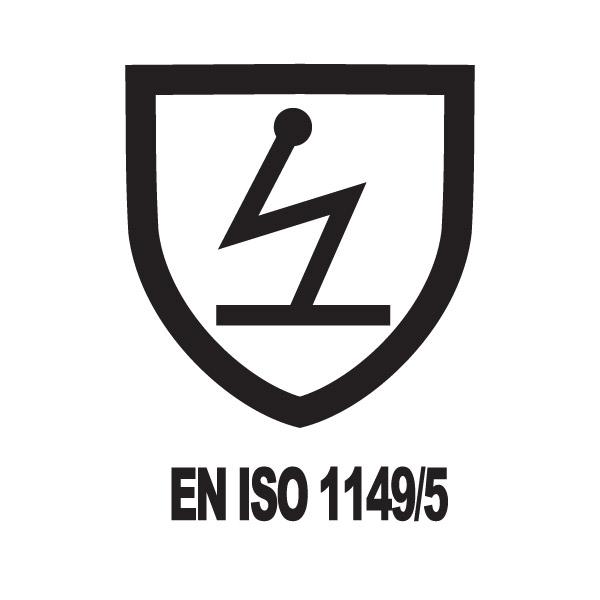
Protective clothing. Electrostatic Material and design requirements
for electrostatic dissipative protective clothing, including hoods and caps, used as part of a total earthed system, to avoid incendiary discharges, where the minimum ignition energy of an explosive atmosphere is not less than 0,016 mJ.
Secondary Flame-Retardant Protection
Note also FR (Flame Retardant) apparel is a secondary means of protection that does not provide sufficient level of protection. Secondary FR protection is intended for the wearer who may be short-term exposed to intermittent hazards and already has Primary FR (Flame Resistant) protection underneath. It provides little or no heat source protection because it is worn to protect against additional risks, such as chemicals or particulates, while also having the critical flame-retardant quality to prevent it from igniting and burning.
Hence, if you are working in a condition where additional risks and FR protection are needed at the same time, wearing flame-retardant coveralls on top of flame-resistant coveralls has several advantages:
The flame-resistant coverall is more expensive and reusable. Wearers who wear flame-retardant coverall on top might extend the life of the flame-resistant garment.
The cost of laundering is not cheap. To save money on laundry, using a flame-retardant coverall outside is a smart alternative for daily protective application.
When working in chemicals or particulates environment, flame-retardant coveralls can protect you from these hazards.
The flame-retardant coverall is usually anti-static for flame-retardant purpose, which reduces the risk of electrostatic sparking in flammable gas environments.
How Flame-Retardant Coveralls Work to Protect Wearers?
Many fabrics will ignite and continue to burn if exposed to heat source or open flames. Some (especially containing synthetic fibers) will also melt onto the wearer’s body. This can result in significant injuries because textile fires often burn longer and cause more damage than the actual source of fire. Flame-retardant garments are specially designed to self-extinguish, reducing the likelihood of it catching fire when exposed to combustion and high temperatures. This gives the wearer valuable escape time and helps to reduce injuries from burns.
Most FR clothing is made from material that is designed to be resilient to heat. Materials like Nomex, Kevlar, and Modacrylic have excellent flame-resistant qualities and are commonly used to make elements of FR garments. Other fabrics, such as cotton, are naturally resistant to flames and can be treated with special chemicals to boost their heat resistance and their protective qualities.
Materials that are naturally flame resistant, and those that are treated with special chemicals, will behave in broadly the same way. These materials won’t keep burning when the source of combustion is removed, won’t ignite easily, and won’t melt. This last point is very important, as burning, melted fabric can do a lot more damage and cause severe, lasting injuries.
Different flame-resistant materials offer different benefits. What protects a person in one setting might not be suitable for another, so it’s essential professionals and employers always check which products are best for their workplace. Our specialists in SGK have vast experience in FR materials and can support this decision process with their competent advice.
Style and Materials
For a long time, flame resistant meant bulky, ugly and unpleasant sensation on wearer skin. Luckily, over the past years, SGK has put a significant effort to change this concept. Garments from our FR Collection have become a lot more stylish. You can now find apparel that is designed to look good and be protective at the same time.
Note most of the lighter flame retardant garments offer lower levels of protection. This is a trade for the heat of the climate at majority of worksites in our country. However, layering them underneath a jacket or coverall with a high arc rating is a great way of adding crucial fire resistance to an outfit. This type of layering can help protect the wearer if the outer garments are burned or damaged, preventing burns and reducing the severity of injuries.
Flame-resistant clothing always has a slightly baggy fit. Skin-tight clothes can transfer heat more easily to the skin, and this can result in more severe burns and injuries. Loose-fitting clothes create a layer of air between the garment and the skin, something that can help to insulate the wearer from heat and increase the outfit’s protective qualities.
Flame Resistant or Retardant?
First and foremost, determine whether your workplace requires Primary or Secondary FR protection. A risk assessment completed on-site by qualified safety managers can help with this. If there are scenarios when both additional risks (chemicals or particles) and FR protection are required, make sure this is stated in your order. Our managers will check with fabric manufacturers that your requirements are met. Remember that flame-retardant garments must be worn over flame-resistant coveralls; a flame-retardant garment should never come into direct contact with the skin to avoid any possible occupational injuries in conditions outside their limits.
Quality Flame-Resistant Clothing
PPE should always be sourced from trusted, experienced suppliers. Professionals need to know that the overalls, balaclavas, jackets, and mufflers they’re wearing will protect them in case of a thermal incident. The best way to ensure PPE is up to standard is to invest in quality clothes from recognized manufacturers. SGK prides to be such a manufacturer in Kazakhstan delivering quality since 2008 to the key clients in country.
Trusted manufacturers will list protective properties of each garment clearly on the label and provide important information on the materials used to make each item of clothing. Understanding the protective properties of each piece will help professionals properly protect themselves while they’re on the job. Detailed laundry instructions and fabric care will help the garment to last longer saving its protective properties.
Flame-resistant clothing can dramatically reduce and even prevent injuries in case of a flash fire, electrical arc, or explosion. This makes FR clothing an essential piece of PPE for people working in a variety of industries. Investing in good-quality FR clothing, and carefully checking ratings and requirements, can help to keep professionals safe while they’re tackling even the most dangerous of tasks.
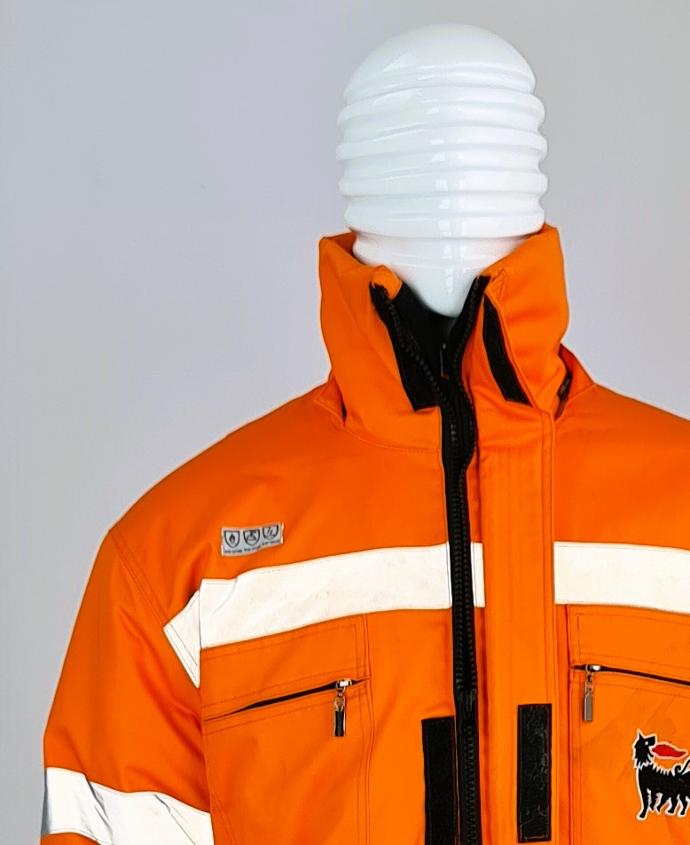
SGK FR Garments
Our factory manufactures FR rated apparel since 2008. Our garments appear at every significant oil field in Kazakhstan.
Browse our shop to find solution that suits your business and applications.
Tips to Know when Wearing FR Garments
Ultimate protection comes at a price for suitable materials. It needs to be treated with care so that your investment lasts longer. Here are some tips to use FR Garments correctly:
DOs
- Wear clothing made from heavyweight, tightly woven, 100% wool or cotton to protect from UV radiation, hot metal, sparks and open flames. Flame retardant treatments become less effective with repeated laundering. Advise fabric care sheet coming with your PPE to ensure long life of your garment.
- Keep clothing clean and free of oils, greases and combustible contaminants.
- Wear long-sleeved shirts with buttoned cuffs and a collar to protect neck. Dark colors prevent light reflection.
- Tape shirt pockets closed to avoid collecting sparks or hot metal or keep them covered with flaps. Ensure your garment does not have pockets without flaps.
- Pant legs must not have cuffs and must cover the tops of the boots. Cuffs can collect sparks.
- Repair all frayed edges, tears or holes in clothing.
- Wear high top boots fully laced to prevent sparks from entering into the boots.
- Use fire-resistant boot protectors or spats strapped around the pant legs and boot tops, to prevent sparks from bouncing in the top of the boots.
- Remove all ignition sources such as matches and lighters from pockets. Hot welding sparks may light the matches or ignite leaking lighter fuel.
- Wear gauntlet-type cuff leather gloves or protective sleeves of similar material, to protect wrists and forearms. Leather is a good electrical insulator if kept dry.
- Using a shield can help keep any sparks spray away from your clothing.
- Wear leather aprons to protect your chest and lap from sparks when standing or sitting.
- Wear layers of clothing. To prevent sweating, avoid overdressing in cold weather. Sweaty clothes cause rapid heat loss. Leather welding jackets are not very breathable and can make you sweat if you are overdressed.
- Wear a fire-resistant skull cap or balaclava hood under your helmet to protect your head from burns and UV radiation.
DONTs
- Do not wear rings or other jewelry.
- Do not wear clothing made from synthetic or synthetic blends. The synthetic fabric can burn vigorously, melt and produce bad skin burns.
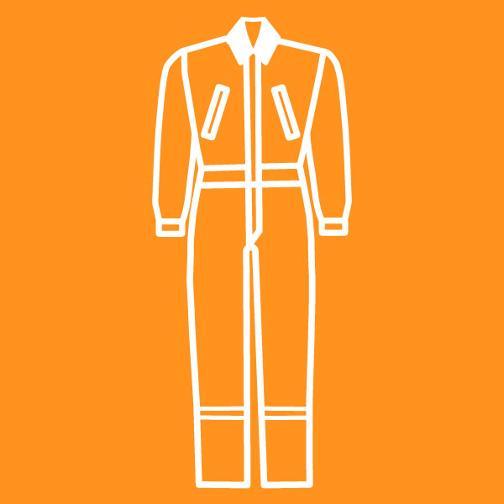
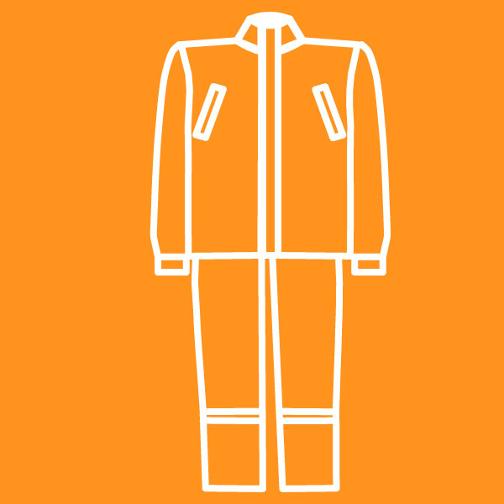
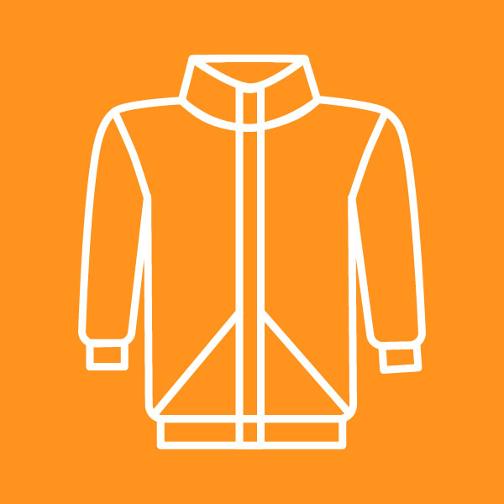
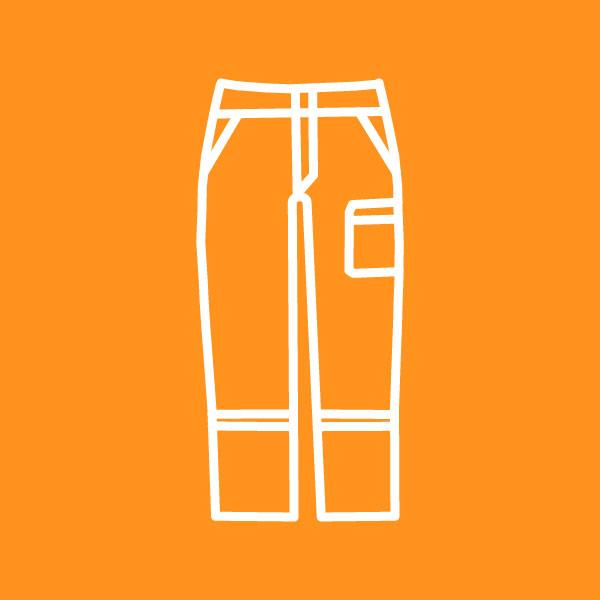
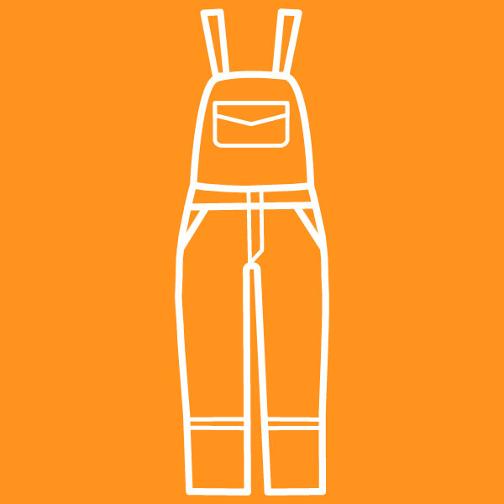
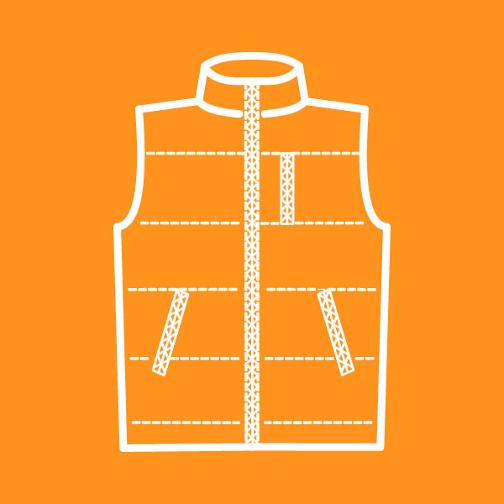







Flame Resistant Garments